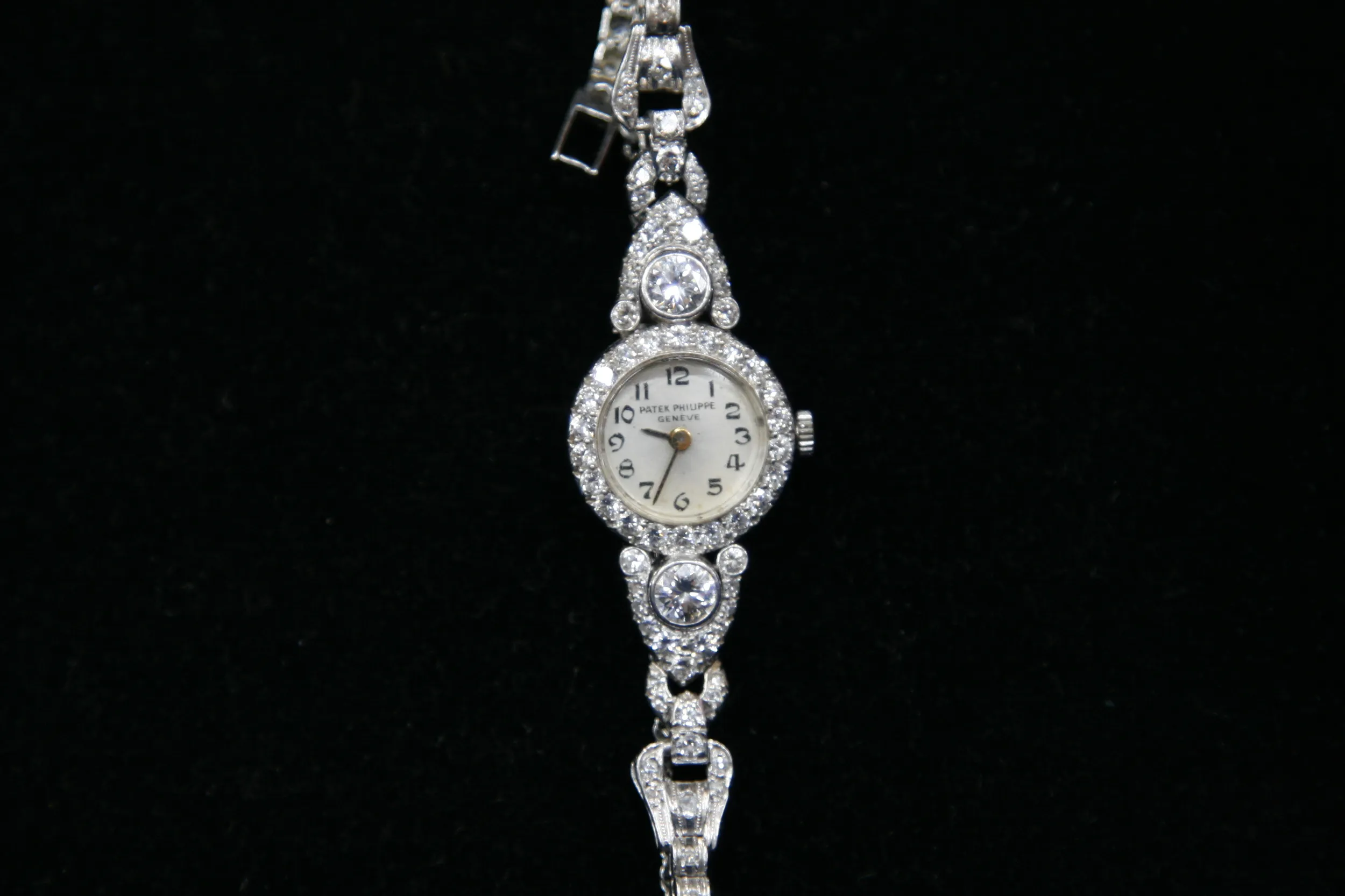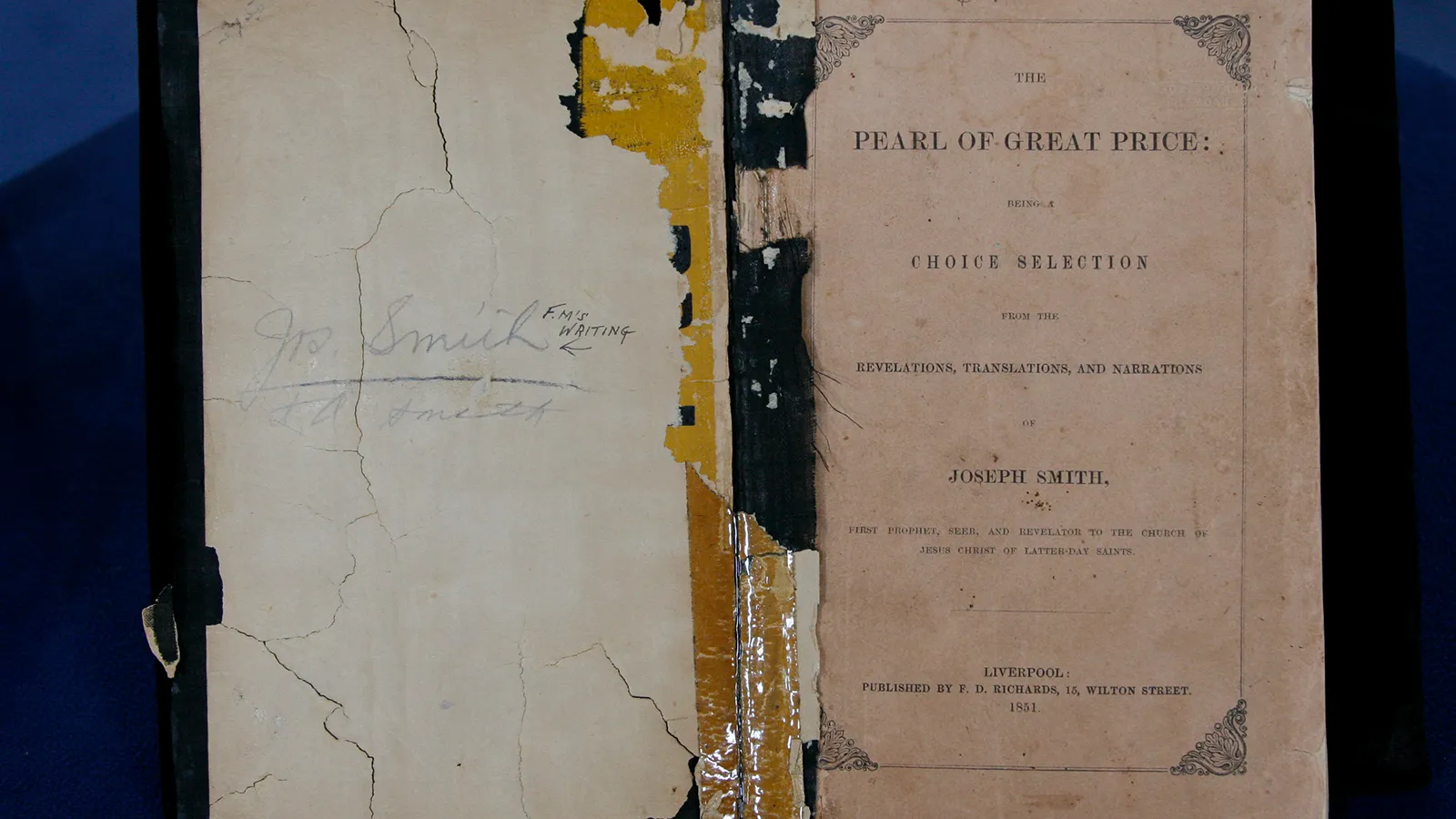GUEST: They were my great-aunt's. She gave me the gold watch and she gave my mother the diamond watch, and then my mom passed away and left the diamond watch to me.
APPRAISER: These watches, both of them, are made by Patek Philippe, established in Geneva in 1839. But they usually found their way into very wealthy homes. They had a simple business plan: to produce the most beautiful and the most expensive luxurious wristwatches, pocket watches in the world. They were highly prized by queens, kings, people of nobility, Let's talk about the one closest to you, the yellow gold one, 18-karat. You told me that's the one you usually wear?
GUEST: That's the one I wear, I've worn it for 20 years. It's from 1944. So I figured it was safer to wear that one rather than the diamond one.
APPRAISER: Why do you say 1944?
GUEST: Uh, it's engraved on the back when she bought it.
APPRAISER: Okay. Good, I saw that. However, I looked up the serial numbers.
GUEST: Oh.
APPRAISER: And they keep very, very good records. And that watch, in fact, was made between the years of 1910 and 1915.
GUEST: Really?
APPRAISER: Yeah, and what's unusual about it is the shape. The shape is what we call tonneau, or barrel-shaped. It's actually back in style. And another nice feature is, along with the dial, they put these large Roman numerals in white enamel, so it's easy to see, 'cause let's face it, sometimes, as we get older, we need larger numbers.
GUEST: That's why I don't wear that one. I can't see the numbers.
APPRAISER: That's right, but it's, it's still nice for dress.
GUEST: Yes, it's very nice.
APPRAISER: The diamond watch was made around 1935. This watch is platinum. It has about two carats of diamonds in it. What's interesting is, the diamonds are full cuts. That's referring to the amount of facets it's had. Most watch companies were using single cuts. So here, Patek Philippe went the extra mile, put the better-quality diamonds in. The movement's been replaced. It originally came with a mechanical movement-- you knew that. Ah-- who replaced it?
GUEST: My mother.
APPRAISER: Do you think, maybe, possibly, she has the old movement at home?
GUEST: No, I've looked.
APPRAISER: You've looked.
GUEST: I've looked, yeah.
APPRAISER: Well, you may want to look for another movement from the same period to put back into that watch, 'cause...
GUEST: That's a good idea.
APPRAISER: Right now, we should tell everybody there's a, there's a quartz movement in there.
GUEST: Uh-huh.
APPRAISER: Which is easy, you just set it, you don't have to worry about it. Change the battery once a year. The value on this watch, with the quartz movement-- everything else is signed Patek, includes the dial-- I would say it's worth $8,000.
GUEST: Wow.
APPRAISER: You spend $500, get the right movement, it's right back up to $10,000.
GUEST: Oh!
APPRAISER: The other watch, the one you wear every day, I hope you continue to wear it every day.
GUEST: I wear it every day, yeah.
APPRAISER: But I got news for you: same amount of money. $10,000.
GUEST: Really? With no diamonds?
APPRAISER: With no diamonds, uh, just classic Patek shape. Very desirable today. Back then, women who furthered the brand for Patek were people like Queen Victoria...
GUEST: And my Auntie Mabel.
APPRAISER: And your... (both laugh)












